Equipment for
Water Treatment
Osmorev-Innovative Solutions (OIS) offers a wide spectrum of technical services using synergistic technologies such as membrane filtration, ion exchange, sorption equipment and more. Thanks to considerable experience, OIS can offer integrated solutions for the most challenging water and wastewater treatment applications. OIS serves customers around the world, offering them the best solutions to increase productivity and reduce costs.
OIS is more than just a technology vendor. We strive to be the partner of choice for our customers by serving them during the R&D phase, through piloting, large-scale implementation and after-sales services. Our portfolio of products and systems offers technologies for both small and large businesses, which allows us to deliver the most cutting-edge and comprehensive solutions.
Reverse Osmosis and Nanofiltration Units

Reverse osmosis units are designed to purify water by membrane separation from mineral salts, organic substances, trace impurities and bacterial contaminants.
Reverse osmosis is passing water containing mineral salts, organic substances, bacteria and micro impurities under pressure through special semi-permeable membranes. The reverse-osmosis membrane allows only water molecules to pass through while retaining impurities. The result is two streams: purified and desalted water (permeate) and water with concentrated impurities (concentrate).
The efficiency of reverse osmosis is determined by the properties of the membranes used, which must meet the following requirements:
- High selectivity;
- High specific permeability;
- Rigidity of characteristics during operation;
- Resistance to the environment;
- Sufficient mechanical strength.
Microfiltration Units
Microfiltration units are designed to purify water from mechanical impurities (sand, rust, scale, etc.).
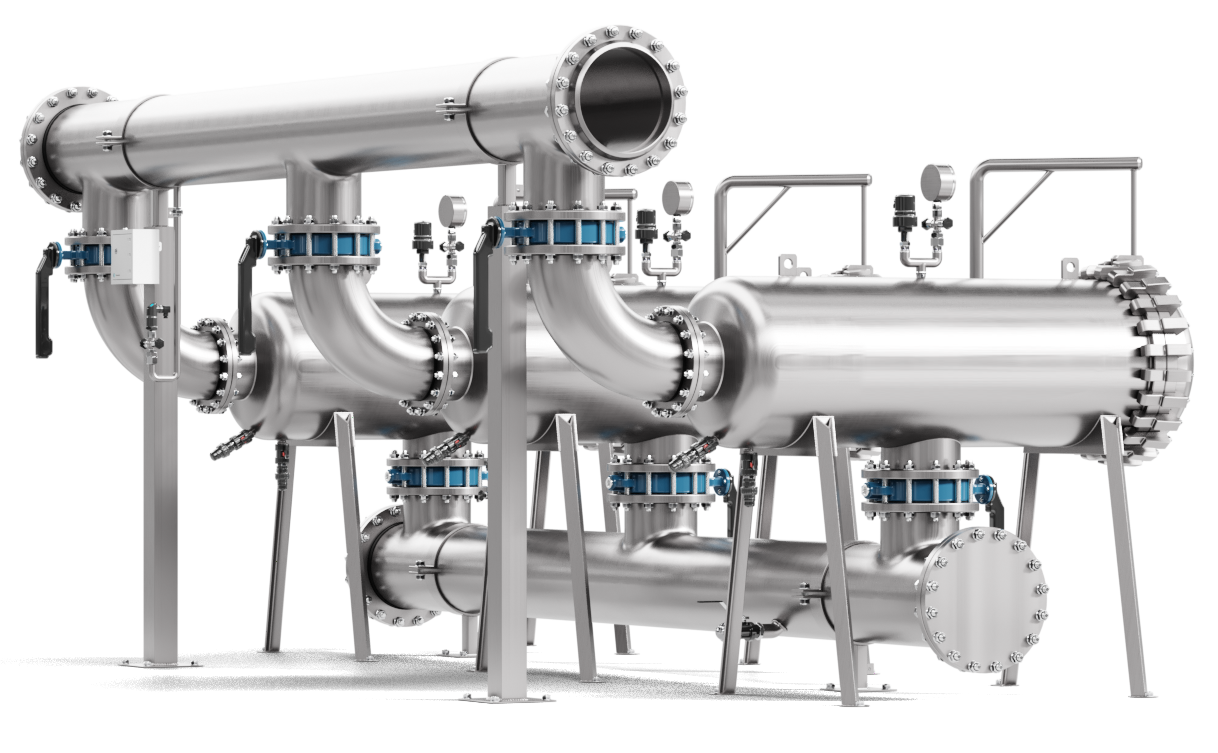
Ultrafiltration Units

The ultrafiltration unit is designed to purify water from suspended and colloidal impurities, microorganisms and organic matter in drinking and industrial water supply systems.
The operation of ultrafiltration units consists of repeated filtration stages (20-60 minutes) and backwashing with filtrate (20-90 seconds), forming a filter cycle.
At the filtration stage, the feed water is pumped to the ultrafiltration module with a pump. Before the module, the water is passed through a mud box, which filters out coarse particles, thus protecting the membranes. A coagulant can be dosed into the feed water line (to improve filtration and backwashing efficiency). The water flow passes through the ultrafiltration membranes and enters the filtrate/backwash tank.
The membranes are periodically backwashed, during which impurities accumulated on their surface are removed.
From time to time, it may be necessary to use another type of flushing, chemical washing (using reagents). Chemical washing is performed at intervals ranging from two times a day to once a week, depending on the quality of the treated water.
Dry air is used to check the integrity of the membranes.
Electric Deionization/Electrodialysis Units
Electric deionization units are designed for reagent-free production of highly demineralized water with an electrical resistivity of up to 18 MΩ·cm.
The electric deionization technology is based on a continuous process involving ion exchange membranes, ion exchange resins and direct electric current.
Special cells are used for the electric deionization. The two outermost cells contain electrodes separated by ion-selective membranes. The chambers with treated water are filled with a mixture of cationites and anionites in order to reduce the electrical resistance of water.
Electric deionization is a reagent-free technique of water purification, where hydrogen ions are released at the cathode, and hydroxyl ions are released at the anode, which regenerate ion-exchange resins.
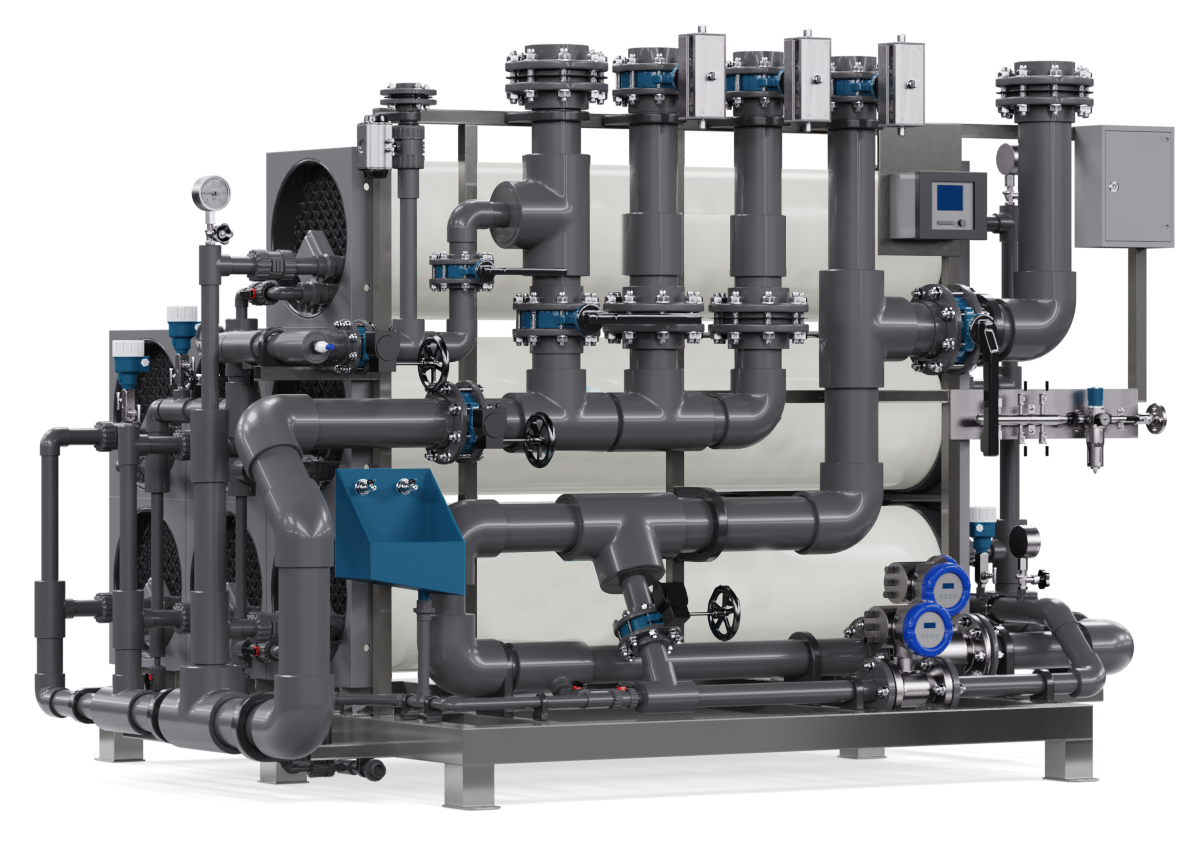
Membrane Degassing Units
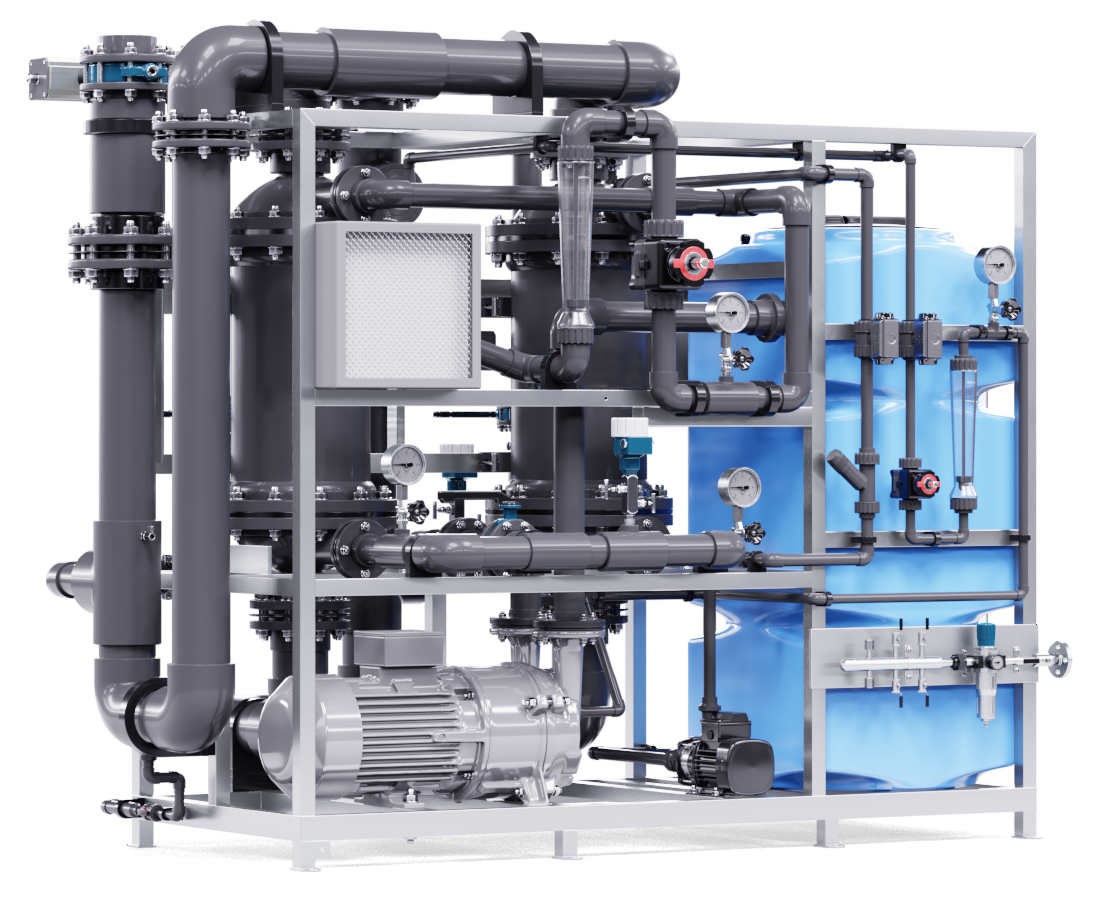
Membrane water degassing systems are designed to reduce the content of gases dissolved in water, such as oxygen, carbon dioxide, nitrogen, methane, hydrogen sulfide, radon, etc.
Membrane degassing technology is based on the use of selective membranes that are permeable to dissolved gases, while impermeable to water. The membranes are located in membrane contactors.
The operating principle of a membrane degasser consists in the diffusion transfer of dissolved gases into an inert carrier gas flow or into a vacuum through the pores of a hydrophobic membrane. The membrane is an inert carrier that brings the aqueous and gaseous phases into direct contact without mixing. The mass transfer between water and gas phases is determined only by the pressure difference of the target gas in the two phases.
Sorption and Ion Exchange Filtration Units
Sorption filters are designed to purify water from sorbing impurities, in particular from organic substances, heavy metals, some bacteria and offensive odors.
A sorption filter is a vertical body made of metal or fiberglass with drainage and distributing devices filled with a special load (sorbent).
The technology of the sorption filter involves sorption of contaminants by passing water through the sorbent (from top to bottom).
As the filter works, the sorbent load gradually becomes contaminated, that is why it is important to periodically carry out its partial regeneration by backwashing (from bottom to top).
Ion exchange filters are used for water softening, desalination and selective removal of various ions.
Ion exchange technology is based on the use of special solids (cationic and anion exchangers) capable of absorbing positive and negative ions from the electrolyte solution in exchange for equivalent amounts of other ions.

Depending on the exchangeable ion, the processes and devices are named as follows:
- H-cationization, H-cation exchange filter.
- OH-anionation, OH-anion exchange filter
- H-cationization is used to remove all cations from water and replace them with hydrogen ions
Dosing and Reagent Preparation Units
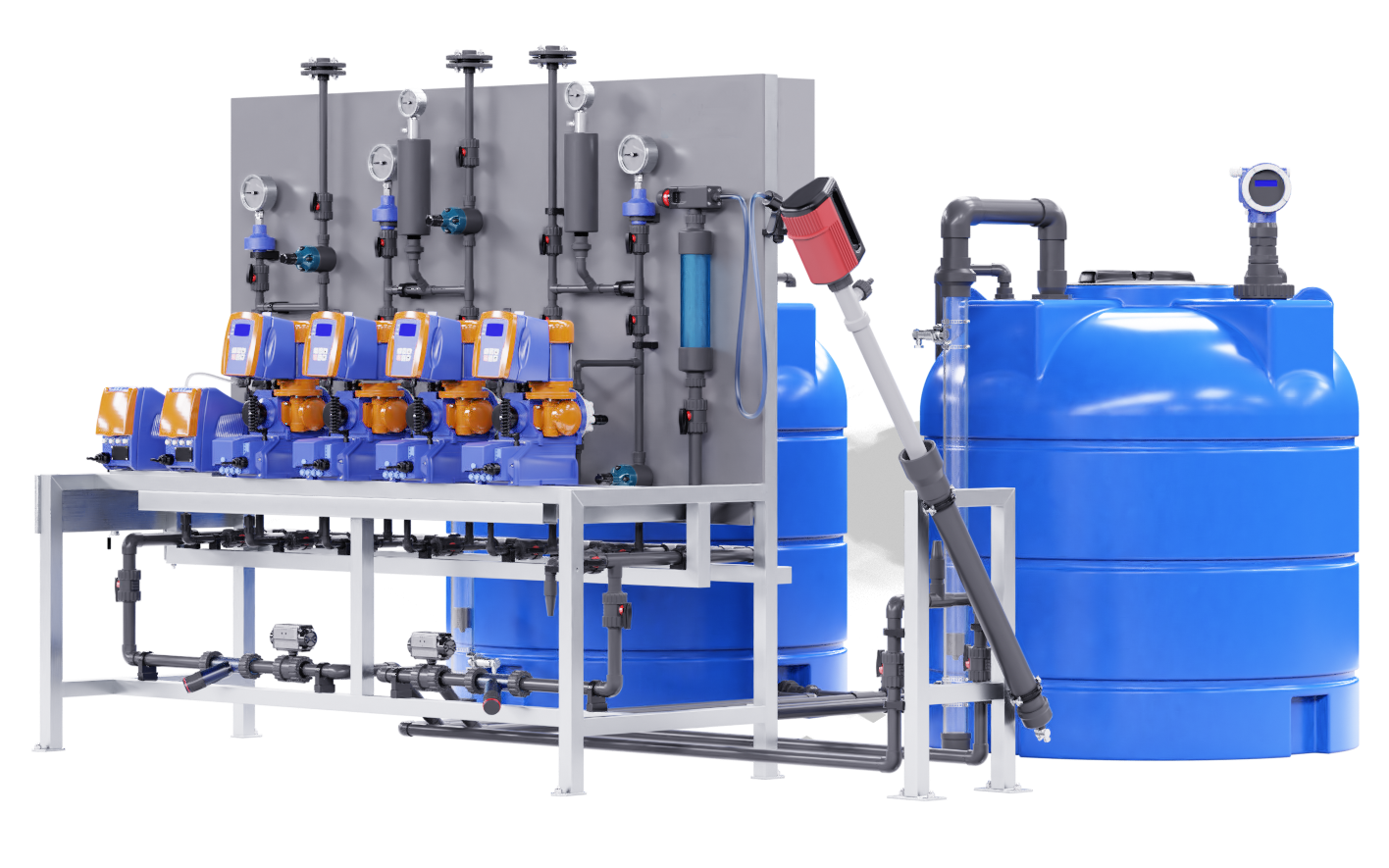
These units are designed for dosing the required amount of reagents used in the technology of water and wastewater treatment (coagulants, flocculants, acids, alkalis, etc.), as well as solutions of mineral ions in order to obtain drinking water of the required composition.
Calculation of the required dose of the reagent is based on data on the composition of the water.
Dosing systems can be used in both continuous and batch water treatment processes.
The reagent dosing unit consists of a welded frame with a polyethylene tank on the pallet at the bottom, on which the dosing pump is mounted.
Dosing pumps (reciprocating positive displacement pumps) draw in a given volume of liquid during the reverse stroke of the pusher and push it into the dosing line in the discharge cycle.
The pump operation can be adjusted by varying the length and stroke frequency. In this way, an accurate metering is achieved that remains constant even with varying backpressure.
Pumping Stations and Auxiliary Equipment
Pumping stations provide a constant pressure of the feed water in the pressure header, corresponding to a programmed value.
Pumping stations can operate with different control schemes (by pressure switch or with variable speed of the pump motor). All pumping stations are equipped with a dry running protection system.
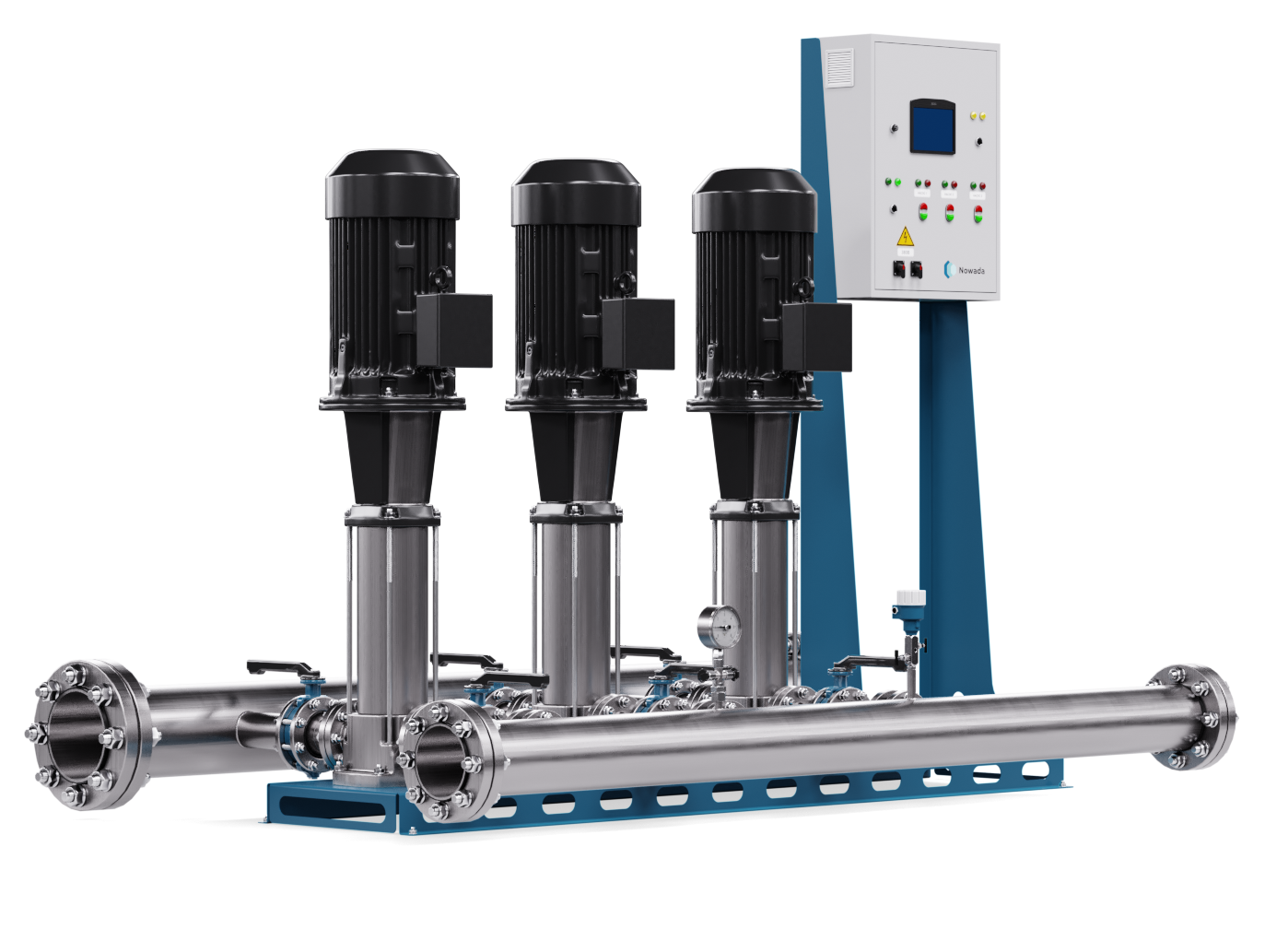
Submersible Ultrafiltration for Drinking Water Treatment and Wastewater Treatment
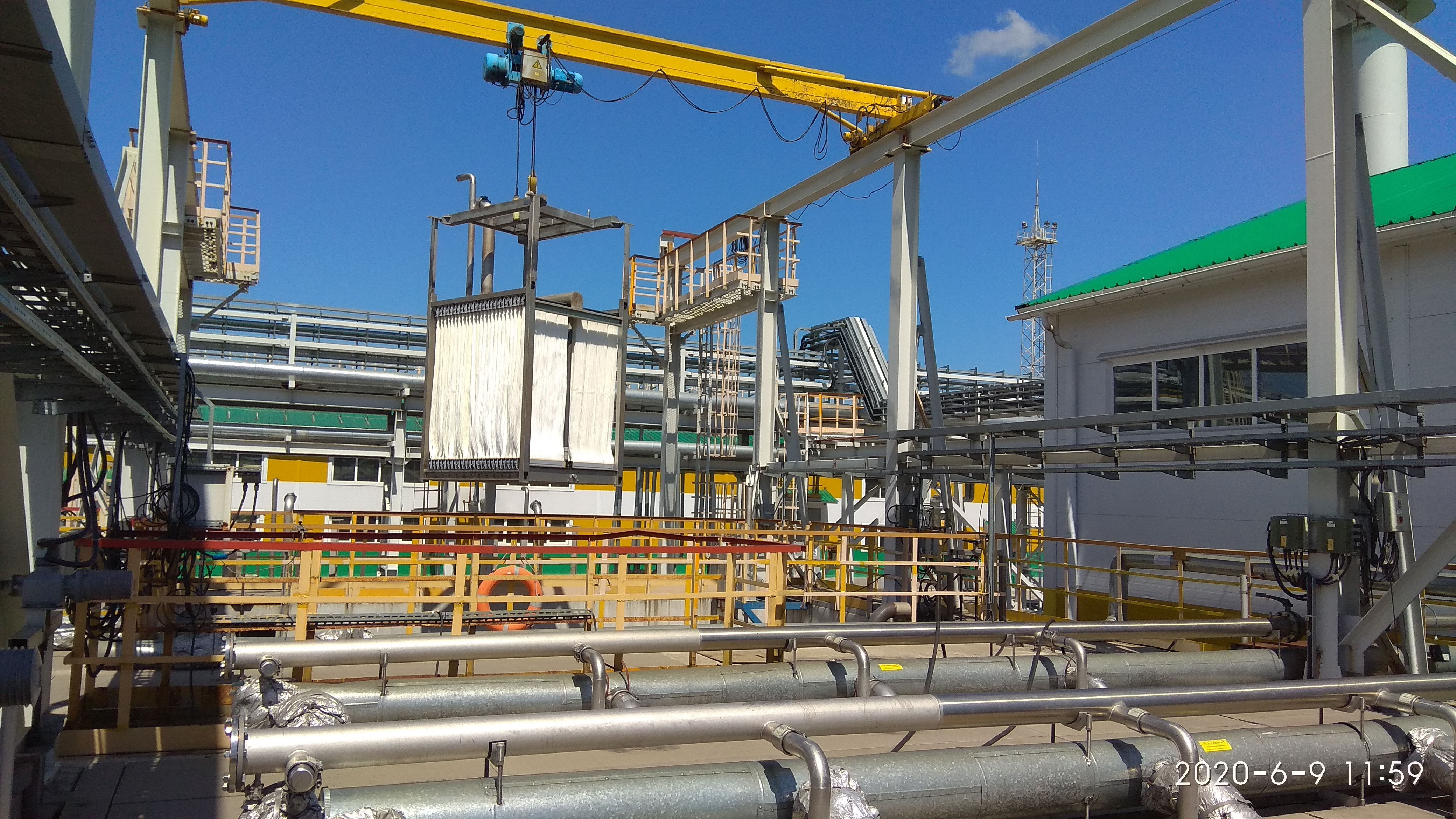
Membrane bioreactor (MBR) is designed for biological purification of wastewater from organic matter, nitrogen, phosphorus, bacteria and viruses.
Membrane bioreactor (MBR) technology combines biological treatment and membrane separation. For biological treatment in MBR, an aerotank combined with a membrane module is used. Membranes are a 100% barrier not only for suspended solids, but also for the activated sludge microorganisms themselves. This configuration of the biological treatment allows to abandon the use of secondary sedimentation tanks and filters, as well as to achieve high concentrations of activated sludge (up to 25 mg/L and higher).
After passing through the grates to remove the largest suspended solids, the wastewater can flow directly into the aerotank, where the biochemical reactions take place.
Non-pressure membrane modules are immersed directly in aerotanks or in the adjacent tanks, through the membranes of which water passes under the influence of a weak vacuum, while all suspended and colloidal particles (including microorganisms of biological sludge) are retained.
